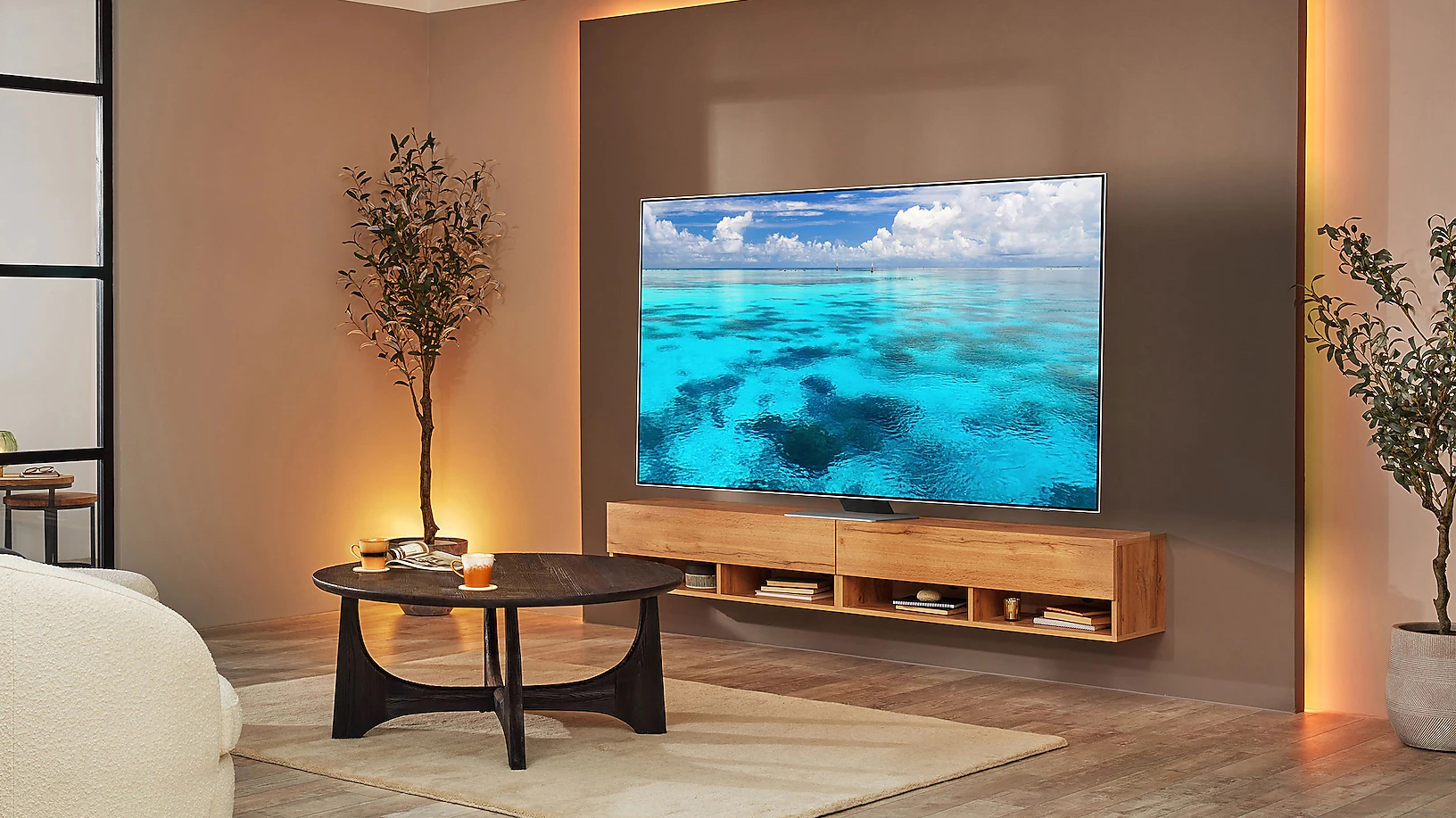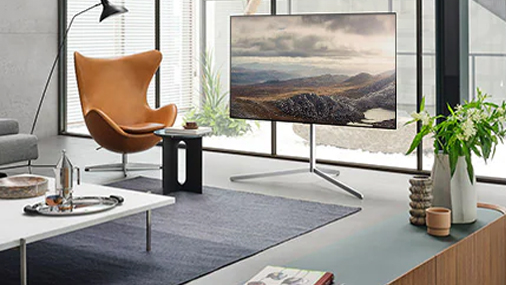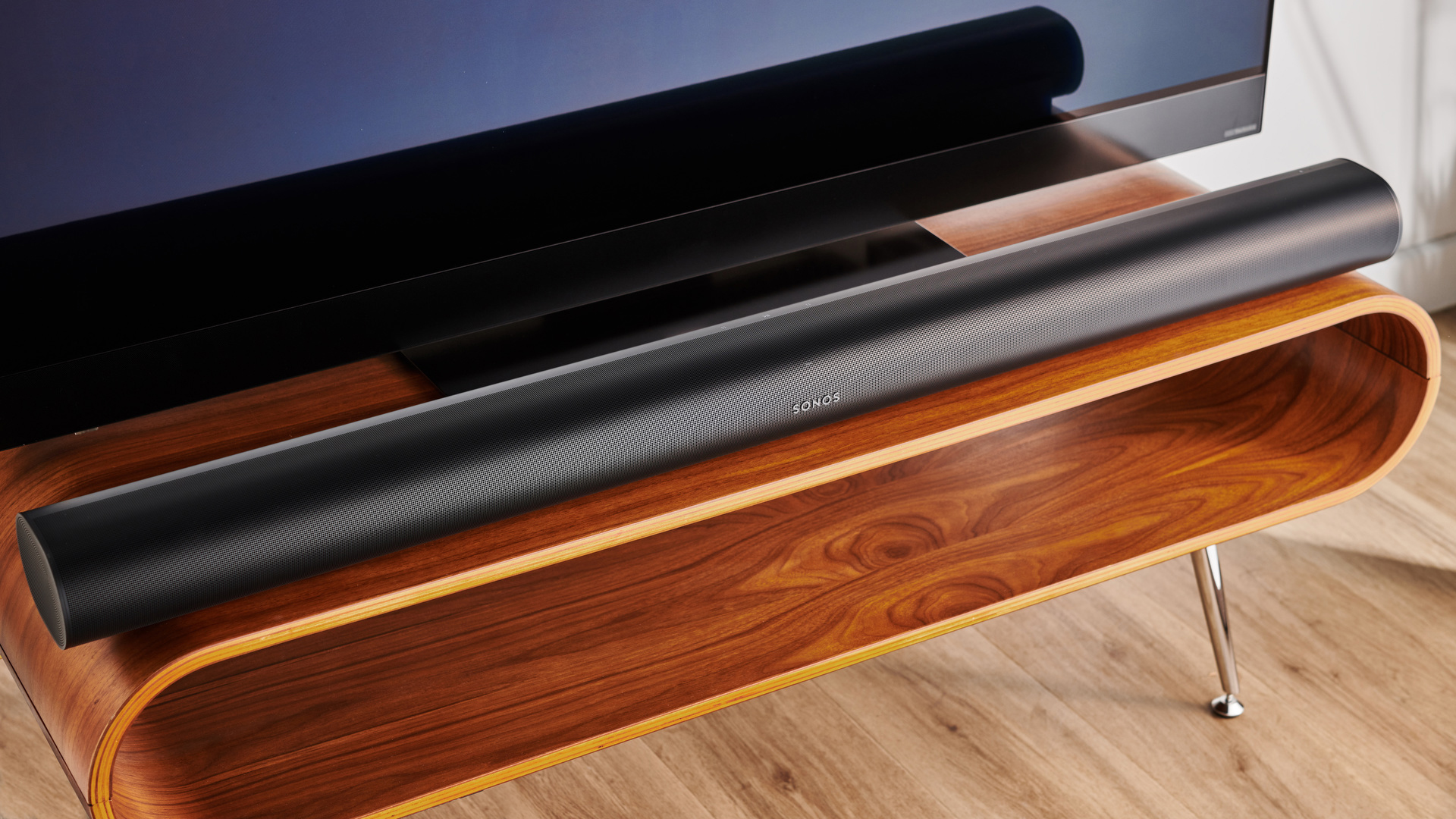5 tips to help you buy the perfect 75-inch TV
The most crucial things to look for if you want a huge TV, whatever your budget

75 inches is the hot new size of TV. Over the last few years, the best 75-inch TVs has been the fastest-growing size, and with an even clearer push towards big and spectacular home theater setups happening during the pandemic, more and more people are looking to see if a 75-inch TV can fit in their home… and in their budget.
That's especially true during sales season, of course, and our guide to the best Black Friday 70- to 75-inch TV deals will hopefully help you find a great price during the sales. But how do you actually decide which model to choose – if you're investing in such a big TV, you don't want to regret it.
The 75-inch category largely includes both 75 and 77-inch displays, though there are also some 70-inch models. If you want the cinematic feel at home, it’s a highly recommendable size to go for, as long as you have the space.
There are quite a couple of options for 75-inch displays in terms of screen technology. Options range from premium OLED displays to fairly economical LCD/LED panels. Some screens this size now offer an 8K resolution, while others are still loyal to the good old 4K.
Connectivity is another feature that becomes extremely crucial when you’re shopping for a screen this massive. It would be a bummer to invest so heavily in a display and not benefit from features such as eARC (Enhanced Audio Return Channel) support or HDMI 2.1 ports with VRR (Variable Refresh Rate) or 4K 120Hz.
Sounds overwhelming, right? Continue reading and allow us to break all of this down for you, so you can know exactly which features will make a difference for you, and which you can skip.
1. Stick to 4K
We recommended holding off on 8K TVs overall currently. You may be tempted to go for 8K resolution on a 75-inch screen, since at that kind of since you could see the benefit of more pixels. However, we’re still going to go with 4K as the best option generally.
Get daily insight, inspiration and deals in your inbox
Sign up for breaking news, reviews, opinion, top tech deals, and more.
Even though 8K may make the picture look sharper, the difference in price and the lack of native 8K content still render 4K the ideal choice for the vast majority of us. And anything lower than 4K would be insufficient for a display this huge. You’d be able to notice the individual pixels making up your screen which would obviously result in things looking less natural.
Hence, 4K isn’t just the bare minimum you should look for in a 75-inch display but it also serves as the perfect sweet spot for this size.
You might consider 8K resolution more strongly if you went for anything bigger than 75 inches. 85 inches is a size where resolution really starts to matter if you're viewing it remotely close up. It is also big enough for you to notice and appreciate the upgrade in resolution.

2. Want a bargain? Don't expect OLED
Screen technology is an area that massively affects the price. We’ve already discussed that OLED is a pricier option, and LCD/LED is what you'll find on cheaper alternatives. Hence, the final decision depends majorly on your budget. However, thanks to the advent of newer panel technologies, we now have some excellent mid-range options.
Especially considering that we suggested holding off on an 8K resolution, we highly recommend an OLED screen if you can afford it, and if your priority is a home theater experience that matches the cinematic look you get from a pro projector. A premium OLED such as the LG C2 brilliantly offers precisions in color and contrast to make up for any disappointment in not getting 8K detail.
An OLED display delivers excellent contrast coupled with rich colors and crisp images. The blacks are deep, and the whites are as bright as well, especially in the latest panels. The color saturation is impressive, resulting in intense and vivid picture quality.
LED/LCD remains the economical way to go. But that doesn’t mean it will lead to a poor experience. The 75-inch Sony X90J, for instance, is an excellent option to invest in for a ridiculously low price, where it's still available. Sporting a direct-backlit LCD panel, the X90J offers brilliant picture quality for the price – and Sony's excellent picture processing is great at making every look clear on-screen even at the huge size. The Hisense U6G ULED is another great example of a bright and affordable LED TV.
If an OLED is out of your range and you’re looking for something more premium than the cheaper LED models, then mini-LED is the tech you need. Samsung's Neo QLED range is the most famous of these options, and features QLED tech for extra-rich colors and high brightness. Regular LEDs are 40 times thicker than mini-LEDs, and therefore mini-LEDs offer much more accurate local dimming, so they can offer close to the kind of striking contrasts that OLED offers.
The 75-inch Samsung QN85B is an excellent option here, while the 75-inch Samsung QN95B delivers even more brightness and more precise contrast. The latter is as expensive as OLED TVs, though. At the most affordable end, the Hisense U8H is an example of a mini-LED display that features deep blacks and impressive brightness.
3. Know your HDR formats
HDR support is a feature you will definitely find in all 75-inch screens. The question is which HDR format one should look for. The ones you need to know are HLG, HDR10, HDR10+, and Dolby Vision. HLG and HDR10 are the basic standards: HLG is used for live broadcasts, HDR10 is the base level of HDR for streaming and 4K Blu-rays.
HDR10+ offers results that are far more realistic and impressive than the ones offered by HDR10. This is due to the fact that HDR10+ sends dynamic metadata to the TV which allows it to determine specific color and brightness levels for individual parts of the movie, rather than the whole thing be set to certain limits.
Dolby Vision is a format supported by most high-end TVs. Much like HDR10+, Dolby Vision also sends dynamic metadata to the TV resulting in more lifelike picture quality. Most importantly, though, it's much more popular with streaming services than HDR10+. Dolby Vision used by Disney+, Netflix, Apple TV Plus and others – HDR10+ is mainly used by Amazon Prime Video.
4. Gamers should future-proof with HDMI 2.1
Connectivity is a crucial aspect of TV screens but it becomes exceedingly important when we’re talking investing lots of money in a huge-screen TV. This is because we want to make sure we future-proof our screen for purposes other than watching content, such as gaming.
Look for a screen that hosts at least four HDMI ports, out of which, at least two are HDMI 2.1. HDMI 2.1, the newest version of HDMI, supports refresh rates up to 120Hz at 4K, and 60Hz at 8K for 8K TVs. It also supports Variable Refresh Rates and Auto Low Latency Mode for smooth and lag-free gaming. The 77-inch Sony A80K is a strong, more affordable large OLED TV that's ideal for gaming.
HDMI eARC or ARC support is another necessary feature to look for as it simplifies your soundbar/AV receiver setup to a great degree. You can plug one of the best soundbars straight into your TV's ARC port, and all sound from the TV will be sent to it – and your TV's controller will control it. Easy!
HDMI eARC is essentially an advanced version of ARC with higher quality; it isn’t necessary for your TV to feature eARC unless you have very high-end speakers that will enable you to notice the difference when playing 4K Blu-rays.

5. Think about sound
Be prepared for a lot 75-inch TVs – especially the lower-priced ones – to feature below-average audio. Featuring extremely flat panels, modern TVs don’t have sufficient space to sport large-scale forward-firing speakers. Hence, they resort to downward-firing speakers that lack clarity and depth.
One of the solutions is to invest in a soundbar, connected over HDMI ARC. There are a range of available options to choose from, including the surround-sound completion of the likes of Samsung’s HW-Q930B, or the simpler and more affordable Sony HT-G700.
Investing in a screen with Dolby Atmos support is a pretty smart move. Dolby Atmos is a surround-sound technology that offers an immersive home theater-like experience. It is advisable to look for a screen that supports this technology, even if you’re not looking for this kind of sound at the moment.
There are TVs that offer great audio without a soundbar – take a look at our guide to the best TVs for sound for some examples – so if you don't want any extra equipment, pay a little more for a set where the manufacturer has invested extra in the speakers.
Dua is a freelance technology writer who's contributed to TechRadar, PCMag and ScreenRant. She's been a technology fan since she was young, and used to pore over the latest product reviews. When not playing with or researching some new piece of tech, you might find her reading, working out or playing the ukelele.